Holiday Pet Travel Guide

ThinkStock
With so many regulations, fees and safety hazards, it’s “ruff” keeping track of pet travel policies these days, especially during the busy holidays. Your poodle can fly as Delta cargo -- but not your bulldog. Cats can ride New York subways, but not Amtrak. A hotel might allow your pet -- but only in a smoking room. Still, preparation and patience will help in your pet’s safe passage. Whether you’re traveling by air or car, or need a hotel for you and your furry friend, we’ve got tips for a safe and easy trip.
Research Airline and Airport Security Policies
TSA controls who and what gets to the gate, but your individual airline ultimately determines if your pet flies. While United allows online in-cabin pet bookings, Delta requires calling. A few other airlines (US Airways, Southwest) do not carry “checked” pets -- an important point to know before you buy a ticket. Check with your airline directly -- policies differ on weight, season, breeds and more.
In-cabin crates can be hard or soft-sided but should still be durable, fit beneath the seat in front of you, and allow aeration and ability for your pet to stand and turn comfortably. For “checked” transport (pet stowed on your own plane) or cargo (sent separately), again, consult your airline and use carriers that meet International Air Transport Association (IATA) guidelines -- for example, size, labeling and staff access. Also, ask if your airline requires a vet certificate; you may need clearance within (usually) 10 days of travel so you and all pets and passengers are safe from illness.
For travel with airlines such as Delta, United and American Airlines, fees for in-cabin pets generally start at $125 each way.
Prepare for the Price of Pet Travel
If you haven’t flown a pet before, you may be paying as much or more than for yourself. For travel with airlines such as Delta, United and American Airlines, fees for in-cabin pets generally start at $125 each way, and can be much more for checked pets -- not counting the cost of carriers. Also, in-cabin pets are your one “carry-on” luggage item. So budget for checking or shipping your other bags ahead of time.
Book Your Buddy Via a Live Human Being (and Do It Now!)
All flights have quotas for animals in cabin, and holidays are crowded. So book pet air travel 4 to 6 weeks ahead of time, if possible. You can book holiday pet travel via the web, but we don’t recommend it. Airline policies differ: While United allows online in-cabin pet bookings, Delta requires calling. A few other airlines (US Airways, Southwest) do not carry “checked” pets -- an important point to know before you buy a ticket. So consider using websites as resources, then book with a person for pet confirmation.
Driving instead? All major rental car companies allow pets, but to avoid schlepping your mastiff in a MINI Cooper, reserve your rental at least 2 weeks ahead. And whatever your pet travel plans, keep receipts with you, and always call to confirm within 48 hours of departure.
Find Room at the Inn

Pet-friendly lodging is expanding, but you may pay extra fees/deposits -- and for smaller or smoking rooms. Sites like Hotels.com, Expedia and Travelocity offer “pets” in their amenities searches so you can save some bones, but …
As with flying, hotels are busiest during the holidays, so be sure your pet is included in your booking. Even if your hotel says “pet-friendly,” talk to a live agent, get a receipt and confirm again before you check in.
Finally, request a ground floor room, or one near the elevator/exit to make outside walks more accessible. And if you must leave your pet unattended, crate her and give your cell number to the front desk in case of emergency.
Ensure Hydration, Medication and Tummy Elation
Especially when flying, pack enough food, water and medicine for your little pooch in cases of travel delays or emergencies. (Tip: Save money by bringing an empty pet travel plastic bottle to refill after airport security). Dry food is permitted in cabin, but keep wet food under 3.4 ounces. If you do need to bring extra wet food, you must declare it to the security officer upon arrival at the checkpoint.
Don’t Run Your Pooch Through the X-Ray!
Believe it or not, people routinely leave their pets in carriers during x-ray screenings. Remove your pet first and send through the empty crate, then walk or carry him or her through the metal detector with you, including collar and leash (you may be subject to additional screening).
“Family Lanes” are special screening lanes for those with disabilities, children or any potentially complicated screenings. Pets are family, so feel free to use this option.
Alleviate Buddy’s Anxiety at 30,000 Feet
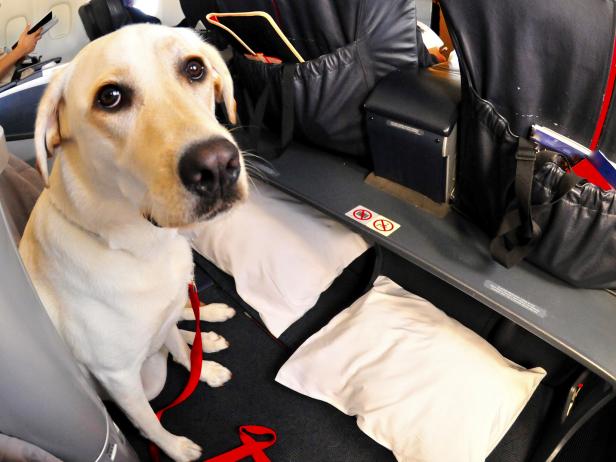
mauinow1 / Getty Images
Toys and blankets can help relieve the stress that foreign environments, noise and cabin pressure can create for your pet. Use a well-aerated carrier with room for basic movement (standing, turning around). Also learn airport pet “relief” areas before your trip. (Petfriendlytravel.com offers a state-by-state list.)
Airlines strongly disapprove of using pet tranquilizers in-flight because of the life-threatening dangers to a sedated animal at high altitude. Discuss stress-relief options with your vet, and if medication really is necessary, you must have the vet’s paperwork to show airline personnel -- also check out these additional tips on keeping your pet healthy while flying.
Flying can be frightening for even the best-adjusted animal, so watch your pet’s “signals.” A frantic pet can easily slip from your lap, so keep your pet’s collar and ID tags on at all times while in-flight. A leash also protects other passengers should your pet feel threatened. Booking a window seat helps shelter your pet from disturbance.
Or Consider a Pet Shipping Agency
If you cannot travel with your pet or simply want to pay extra for peace of mind, the International Pet and Animal Transportation Association can connect you with approved pet shipping agencies that handle ground or air transport and paperwork for you. Also, remember: Trips get canceled; so it might be a good idea to research travel insurance options at Insuremytrip.com.
Driving Cross-Country With Your Pet
When driving, keep your pet inside with you. Though widely legal, transporting pets atop a car or in a truck bed -- even leashed or in a carrier -- exposes them to foul weather, ejection, choking and flying debris.
Inside the car, free-roaming animals can interfere with your driving, become carsick or have accidents. So tether your pet in a comfy crate or harness, not by the collar (a choking hazard in the case of a sudden stop), in the backseat only for safety from collisions and airbags.
When you stop somewhere, don’t leave your pet unattended for extended periods -- they are susceptible to winter temperatures (just like summer heat), panic and even theft. On road trips (and flights) a pet first-aid kit (with wipes, tongue depressors, pen-light, etc.) is also a handy tool, like the WAG’N line of pet health kits.
MORE: Travel 911 - Tips on How to Travel With Your Pet
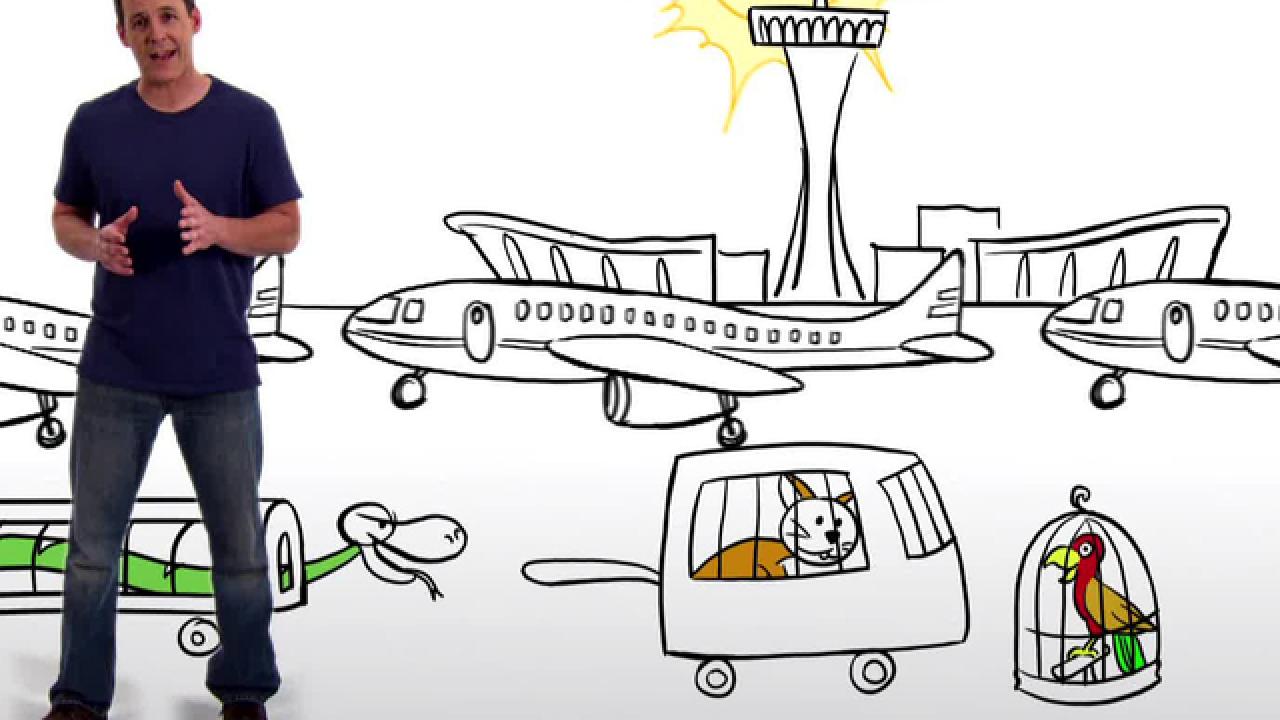


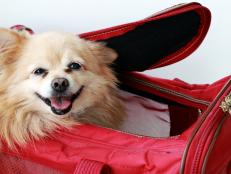


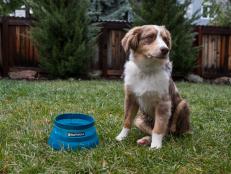

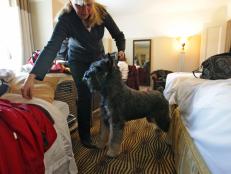
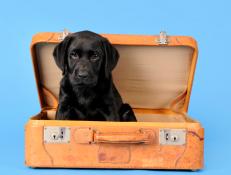


















.jpg.rend.hgtvcom.231.174.suffix/1674758726773.jpeg)











